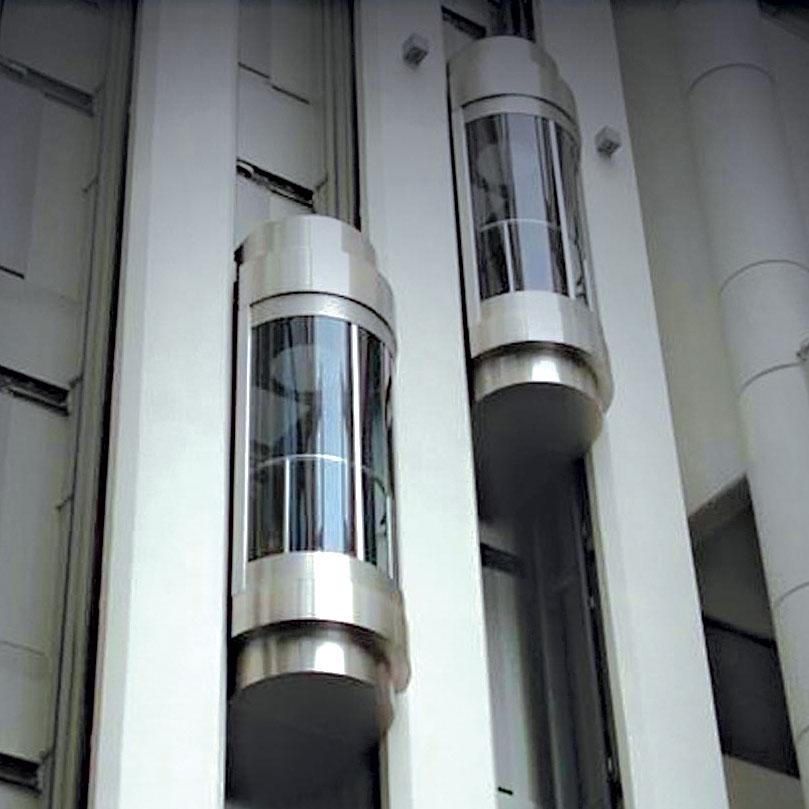We Maintain Lifts with Accuracy: Ensuring Safety And Security and Efficiency
We Maintain Lifts with Accuracy: Ensuring Safety And Security and Efficiency
Blog Article
Diving Into the Globe of Elevators: Usual Concerns Dealt With by Various Lift Devices
As we navigate via the upright transport systems of modern-day structures, elevators attract attention as an indispensable part of our day-to-days live. However, behind their smooth operation exists a world of complex systems that can sometimes come across challenges. From hydraulic lifts to traction systems and machine-room-less styles, each lift type features its collection of common concerns. Understanding these obstacles is essential for making certain the smooth functioning of these crucial systems. Allow's check out the intricacies that underlie the operation of elevators and the possible issues that can develop, losing light on the elaborate internet of lift devices.
Hydraulic Lifts
Hydraulic elevators, typically liked for low-rise structures, utilize fluid pressure to control the movement of the lift car (lift repair companies). This system includes a hydraulic pump pressing oil into a cylinder, triggering the lift to relocate in the wanted direction. While hydraulic elevators are known for their smooth and peaceful procedure, they do include their very own collection of usual concerns
One prevalent problem with hydraulic elevators is oil leak. In addition, concerns with the control system, such as damaged valves or a malfunctioning pump, can cause disruptions in the elevator's motion.
Routine upkeep and punctual repairs are necessary to make certain the smooth functioning of hydraulic elevators. By attending to these typical problems proactively, structure owners can reduce downtime and make sure the safety and efficiency of their upright transport system.
Traction Lifts
When considering upright transport systems in buildings, an additional usual type apart from hydraulic lifts is the traction lift. Traction lifts operate using a system of ropes and weights that move the lift cars and truck by grasping onto the hoist ropes. This mechanism enables for smoother and faster upright transportation contrasted to hydraulic systems.
One of the common concerns dealt with by grip lifts is rope wear. The constant activity of the ropes within the grip system can result in wear and tear over time, possibly triggering the elevator to breakdown or come to be unsafe for use. Normal examinations and maintenance of the ropes are important to ensure the elevator's correct functioning and safety and security.
Another concern that grip elevators might encounter is associated to the control system. Problems with the control system can result in concerns such as erratic motion, hold-ups in response times, and even full shutdowns. Regular screening and upkeep of the control system are crucial to stop such issues and guarantee the lift's reliability.
Machine-Room-Less (MRL) Elevators

One of the vital elements of MRL elevators is the portable gearless traction equipment that discover here is set up within the hoistway. This device efficiently drives the lift automobile without the demand for large tools discovered in traditional grip elevators. In addition, MRL elevators typically make use of a counterweight system to stabilize the automobile, further improving their energy effectiveness.
Regardless of their advantages, MRL lifts might face obstacles connected to maintenance and fixing due to the restricted room for devices installment. Accessibility for servicing elements within the shaft can be restricted, requiring specialized training for specialists. Correct upkeep schedules and routine inspections are crucial to make sure the ongoing smooth operation of MRL lifts.
Overloading and Weight Restriction Issues
Straining and weight limit issues are crucial concerns in elevator procedures. Lift makers style lifts with certain weight capabilities to guarantee passenger safety and security and tools durability.
When elevators are overloaded, it places too much stress on the motor, cables, and various other elements, potentially creating malfunctions or malfunctions. If they discover excess weight, safety devices such as sensors and overload sensing units are in location to prevent lifts from moving. In addition, going beyond weight limitations can lead to boosted energy usage and wear and tear on the elevator system.
To mitigate overwhelming concerns, constructing managers need to prominently present weight limits in elevators and educate passengers on the importance of sticking to these restrictions - lift repair companies. Routine upkeep checks by qualified professionals can likewise help guarantee that lifts read are operating within risk-free weight criteria. By dealing with overloading and weight restriction issues proactively, structure owners can improve lift safety and effectiveness
Electric System Failures
Surpassing weight limitations in lifts can not only cause mechanical concerns but likewise possibly add to electrical system failures within the lift facilities. Electric system failures are a vital problem in elevator operation, as they can cause unforeseen closures, breakdowns, or perhaps safety dangers. One usual electric concern is the getting too hot of components due to extreme present circulation created by overloading the elevator beyond its capacity. This can result in damage to the motor, control, or electrical wiring systems, causing costly repair work and downtime.
Regular upkeep and evaluations are crucial to recognize and deal with possible electrical concerns quickly, ensuring the risk-free and efficient procedure of elevator systems. By sticking to weight limits and performing routine electric system checks, structure owners can minimize the risk of electric failings in elevators.
Verdict

Hydraulic elevators, frequently chosen for low-rise structures, utilize fluid pressure to control the activity of the lift automobile.When taking into consideration vertical transport systems in structures, one more common type aside from hydraulic elevators is the traction lift. Traction elevators operate making use of a system why not try here of ropes and counterweights that relocate the elevator auto by clutching onto the hoist ropes. Unlike conventional lifts that require a different machine area to house the devices, MRL elevators incorporate most of the parts within the shaft, getting rid of the requirement for a dedicated maker room.In final thought, elevators deal with usual issues such as hydraulic malfunctions, grip system failings, and electrical system troubles.
Report this page